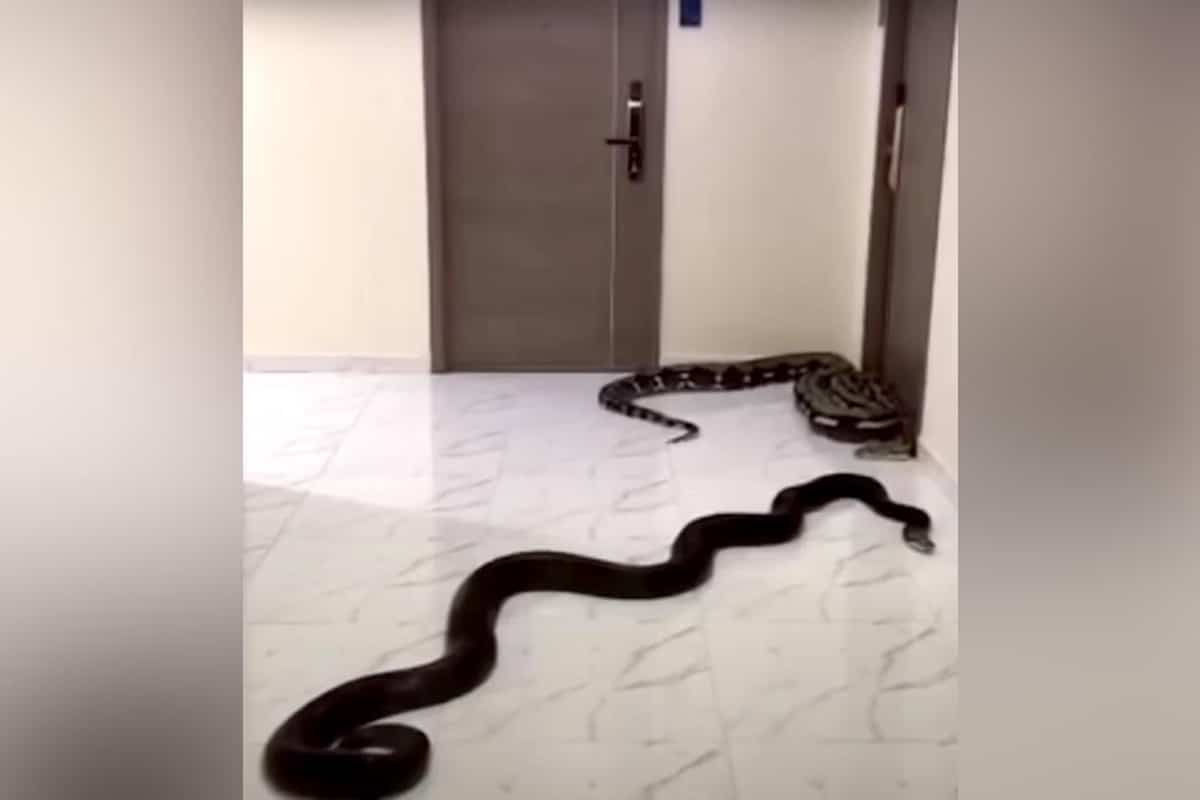Wild fish can recognize individual human divers, reveals new research.
They use visual differences between divers to recognize a person who rewards them, say scientists.
Divers at a research station in the Mediterranean had a problem as, for years, at some point in every field season, local fish would follow them and steal food intended as experimental rewards.
The fish appeared to recognize the specific diver who had previously carried food, choosing to follow only them while ignoring other divers.
Their findings, published in the journal Biology Letters, showed that fish in the wild can discriminate among humans based on external visual cues.
(Tomasek, Soller, Jordan via SWNS)
By Talker
Previously, little scientific evidence existed to show that fish can recognize humans at all.
One captive-bred species, archerfish, was able to recognize computer-generated images of human faces in lab experiments.
But the co-first author of the new study Maëlan Tomasek, a doctoral student at MPI-AB, said: “Nobody has ever asked whether wild fish have the capacity, or indeed motivation, to recognize us when we enter their underwater world.”
The new research shows that not only can wild fish recognize individual humans, but they also follow specific divers they know will reward them.
The team says that lends credence to the possibility that fish can have differentiated relationships with specific humans.
Their experiments took place at a depth of eight meters in open water.
Co-first author Katinka Soller, a bachelor student at MPI-AB, said fish participated in trials as “willing volunteers who could come and go as they pleased,”
The first experimental phase tested if fish could learn to follow an individual diver.
Soller started by trying to attract the attention of local fish by wearing a bright red vest and feeding fish while swimming 50 meters.
Over time, she removed the “conspicuous” cues until she wore plain dive gear, kept the food hidden, and fed fish only after they had followed her the full 50 meters.
Of dozens of fish species inhabiting the marine station, two species of seabream in particular willingly engaged in the “training” sessions.
Soller said: “Once I entered the water, it was a matter of seconds before I would see them swimming towards me, seemingly coming out of nowhere.”
Not only was bream learning to follow her, but the same individuals were showing up day after day to join the lessons.
Soller even gave them names.
She said: “There was Bernie with two shiny silver scales on the back and Alfie who had a nip out of the tail fin.”

After 12 days of training, around 20 fish were reliably following her and she could recognise several of them from physical traits.
By identifying individual fish participating in the experiment, the stage was set for the next phase: testing if the same fish could tell Soller apart from another diver.
She dived with Tomasek whose gear differed slightly from hers, notably in some colorful parts of the wetsuit and fins. Both divers started at the same point and then swam in different directions.
On the first day, the fish followed both divers equally.
Soller said: “You could see them struggling to decide who to chase.”
But Tomasek never fed the fish who followed him and, from the second day, the number of fish following Soller increased “significantly”.
To confirm that fish were learning to recognize the correct diver, the researchers focused on six of the large group to study individually, finding that four of these showed “strong positive learning curves” over the experiment.
Tomasek said: “This is a cool result because it shows that fish were not simply following Katinka out of habit or because other fish were there.
“They were conscious of both divers, testing each one and learning that Katinka produced the reward at the end of the swim.”
But when the divers repeated the trials, wearing identical diving gear, the fish were unable to discriminate between them.
The researchers say that was “strong evidence” that fish had associated the differences in the dive gear, most likely the colors, with each diver.
Tomasek said: “Almost all fish have color vision, so it is not surprising that the sea bream learned to associate the correct diver based on patches of color on the body.”
Soller explained that humans do the same underwater.
She said: “Faces are distorted by diving masks, so we usually rely on differences between wetsuits, fins, or other parts of the gear to recognize each other.”
The researchers believe that, over time, fish might have learned to pay attention to subtler human features, such as hair or hands, to distinguish divers.
Soller added: “We already observed them approaching our faces and scrutinizing our bodies.
“It was like they were studying us, not the other way around.”
The research team says the findings suggest that other fish species, including pets, can recognize certain patterns to identify different humans.
Senior author Dr. Alex Jordan, of MPI-AB, said: “It doesn’t come as a shock to me that these animals, which navigate a complex world and interact with myriad different species every minute, can recognize humans based on visual cues.
“I suppose the most surprising thing is that we would be surprised they can.
“It suggests we might underestimate the capacities of our underwater cousins.”
Tomasek added: “It might be strange to think about humans sharing a bond with an animal like a fish that sits so far from us on the evolutionary tree, that we don’t intuitively understand.
“But human-animal relationships can overcome millions of years of evolutionary distance if we bother to pay attention.
“Now we know that they see us, it’s time for us to see them.”









